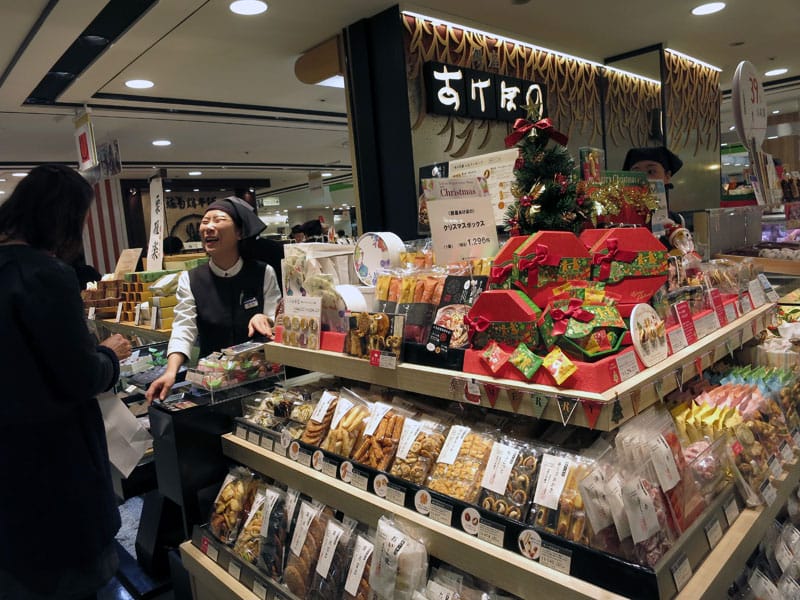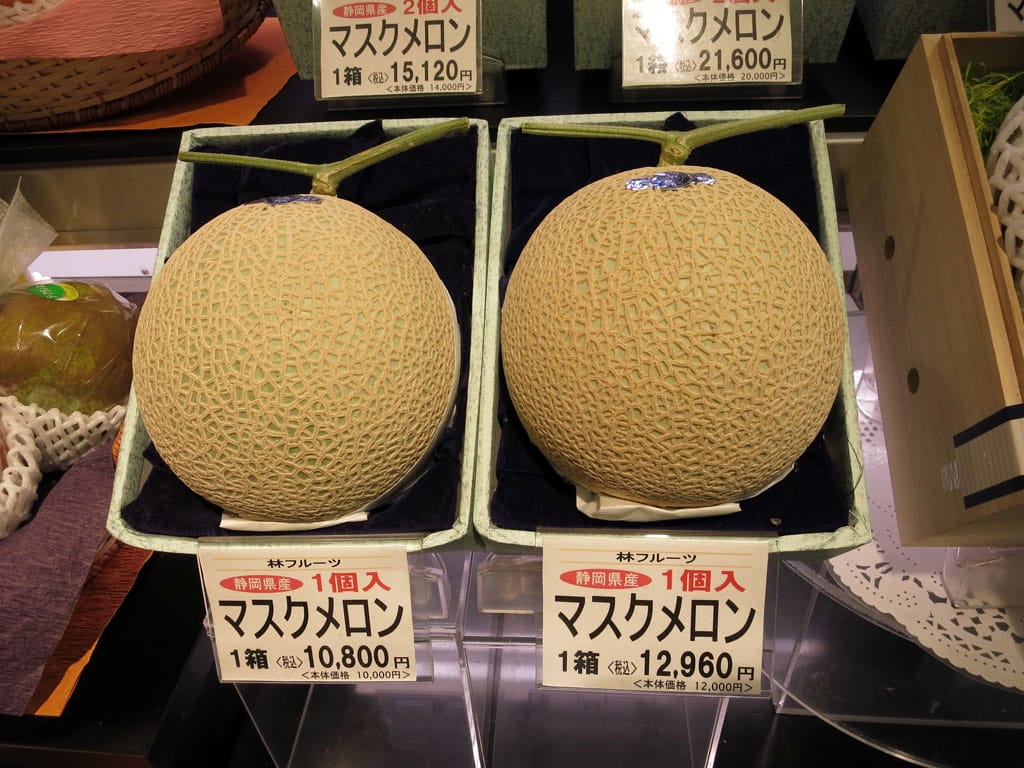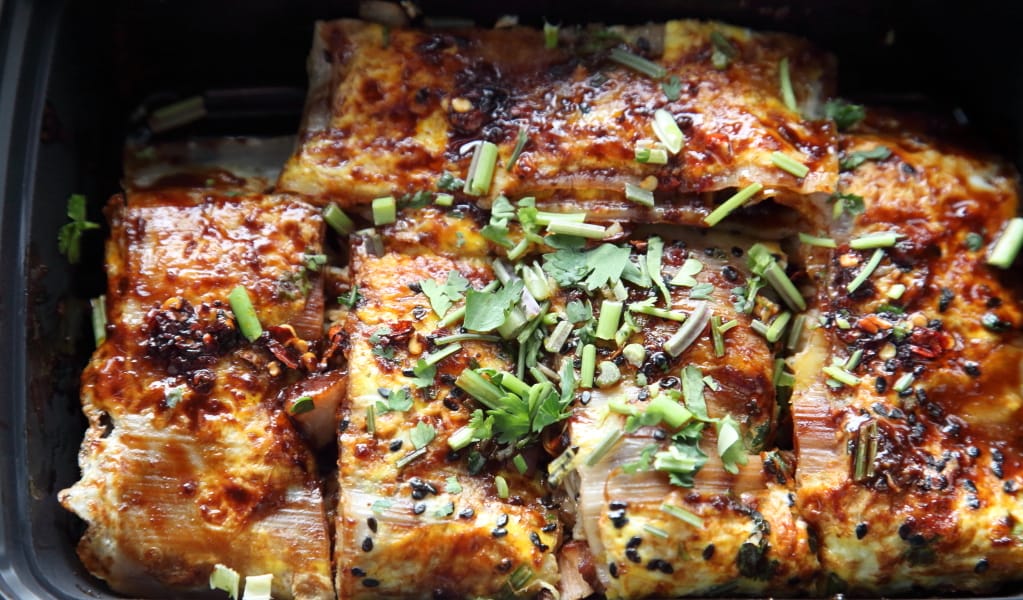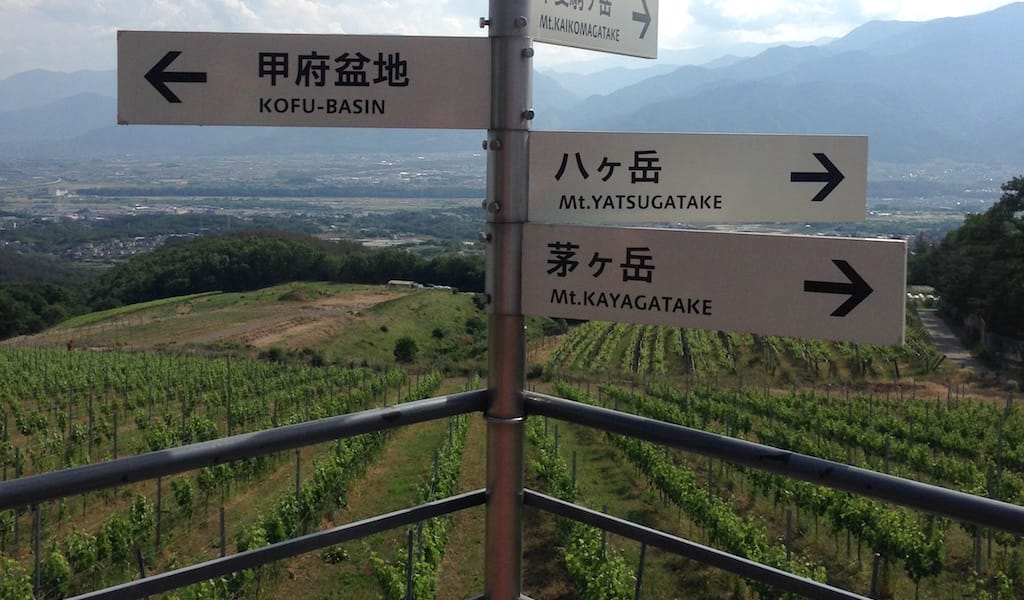In Japan, there’s a different version of Newton’s third law of motion that applies to etiquette: for every act of kindness, there must be a similar and equal act, usually in the form of a gift.
Japanese people are perpetually cognizant of the opportunities and appropriate moments for giving gifts and the many meanings and rituals attached to them. Rather than considering it a burden, many of them love to give gifts and believe it a tradition worth observing.
The gold standard for gift giving in Japan are the mid-year ochugen and the end-of-year oseibo, or seasonal presents. Oseibo giving officially begins on December 20, and in the weeks preceding, stores are crammed with people arranging to send presents to co-workers, employers, teachers, relatives and friends, most of which will be delivered by fleets of courier services. The oseibo (as well as ochugen) is a way of expressing gratitude; it’s a gesture of thanks for extra care sent one’s way or a means of erasing any indebtedness.
Most oseibo are food products like salad oil, canned fruit, pasta kits, jams and jellies and often sake and beer. Sometimes it will be lovely perfumed soap or washing detergent. One very special form of oseibo is sanchokuhin, a gift sent directly from a maker, usually artisanal products from a local manufacturer or farmer.
The formal gift must be wrapped in a particular way and covered by a thin paper noshi, or label, which proclaims it an oseibo and names the sender. The proper amount spent is usually from US$30 to $50, but the price tag can spiral upwards depending on the sender and the recipient’s station in life. Some people offer oseibo to each other in person.
The popularity of online shopping has had a huge impact on oseibo, but more traditional-minded people still like to purchase their gifts in the depachika food halls of major department stores. We recently visited the Toraya stand at Mitsukoshi in Ginza to purchase a birthday gift of yokan (red bean jelly) for a friend’s mother and realized it was oseibo season when we saw that the line in front of the counter snaked over to the next food stall.
While there aren’t many Christians in Japan general, Christmas is a popular gift-giving holiday in Japan. The exchange of presents is not the objective; the main charm of Christmas is the opportunity to give a less formal gift to someone you like.
Sweets are a very popular and not expensive gift. There are traditional Japanese sweets such as the Toraya yokan and Western-style chocolates and cookies. And there are cakes!

Christmas means two main foods in Japan. Many years ago, KFC declared that everyone should eat fried chicken on Christmas Eve. Although nobody can explain why, the idea stuck, and food stores fill up with packages of expensive, already cooked Western-style chicken. The other tradition is Christmas cake, another food that nobody can explain except that it tastes so darn good. People order Christmas cakes weeks in advance.
While there, we also checked out the New Year’s celebratory osechi boxes on sale. Osechi foods range from sweet to salty and each has significance. When tucked into many-tiered bento boxes, or ceramic jubako, they begin to represent a gorgeous Japanese garden.
Families who don’t cook at home can order the traditional Japanese New Year’s foods already gorgeously placed into attractive jubako at places like department stores. Most families have their own jubako that is used year to year. The ones at Mitsukoshi are mainly attractive throwaway versions for the modern family. This year, it’s offering an almost Art Nouveau-style collectable jubako with an old Mitsukoshi poster from 1926 on the top, stuffed with a thrilling variety treats. It costs just under US$500. The good news is that it will probably feed a family of four to six. The price of other jubako ranges from around US$100 (with a throwaway jubako) to thousands of dollars for boxes prepared by famous chefs or containing rare delicacies tucked into gorgeous ceramics.
If you’re confused about what to give, you can always resort to a melon, appreciated in any season. Raised like valuable livestock, the melons are carefully tended to perfection and presented almost like jewelry. Prices go from around US$25 up to hundreds for a prize specimen.
As we say in Japan, “Happy Merry Christmas!”
 November 8, 2018 Senhor Zé
November 8, 2018 Senhor Zé
“Where to eat in Porto?” Google search this sequence of five words and a multitude of […] Posted in Porto July 28, 2021 A Snacker’s Guide to Flushing
July 28, 2021 A Snacker’s Guide to Flushing
New York City has many Chinatowns; how many is a matter for dispute. While the oldest […] Posted in Queens October 25, 2017 Taking Root
October 25, 2017 Taking Root
When we think of wine hotspots (or even coldspots), Japan is not the first place to come […] Posted in Tokyo
Published on December 23, 2016
Related stories
November 8, 2018
Porto“Where to eat in Porto?” Google search this sequence of five words and a multitude of articles listing restaurants and eateries will naturally come up as a result. Some of those suggestions – the trustworthy ones, at least – will mention Casa Nanda. It’s a fair choice: Casa Nanda is, indeed, one of the most…
July 28, 2021
QueensNew York City has many Chinatowns; how many is a matter for dispute. While the oldest and most famous is in Manhattan, southern Brooklyn now boasts two such neighborhoods – or maybe three, depending on who's counting. Without a doubt, however, the city's largest and fastest-changing Chinatown surrounds the eastern terminus of the 7 train…
October 25, 2017
Tokyo | By Culinary Backstreets
TokyoWhen we think of wine hotspots (or even coldspots), Japan is not the first place to come to mind. But the story of wine production in the country is a surprising and fascinating one, with roots in the modernization efforts of the 19th century. As a follow-up to our recent Harvest Week, we spoke to…

















































































